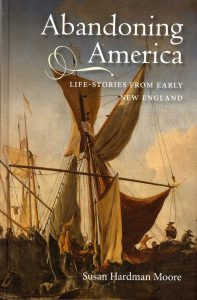 Sir Richard Saltonstall came to New England with the Winthrop Fleet in 1630. He left in 1631. His oldest son, Richard Saltonstall, also returned to England in 1631, where he got married in 1633 and then brought his wife and their nine-month-old daughter back to New England. The younger Saltonstall was active, sometimes controversially, in the Massachusetts government and travelled back and forth between the colonies and old England over the next six decades. In 1643 he took his wife, Muriel, and all of his daughters home to England for the benefit of her health (which apparently was affected by a deep distaste for the New World), leaving only his youngest son Nathaniel to settle permanently in Massachusetts. After more trips back and forth, Richard returned to England for good in 1688. “Richard never really became a New Englander.” Continue reading Abandoning America
Sir Richard Saltonstall came to New England with the Winthrop Fleet in 1630. He left in 1631. His oldest son, Richard Saltonstall, also returned to England in 1631, where he got married in 1633 and then brought his wife and their nine-month-old daughter back to New England. The younger Saltonstall was active, sometimes controversially, in the Massachusetts government and travelled back and forth between the colonies and old England over the next six decades. In 1643 he took his wife, Muriel, and all of his daughters home to England for the benefit of her health (which apparently was affected by a deep distaste for the New World), leaving only his youngest son Nathaniel to settle permanently in Massachusetts. After more trips back and forth, Richard returned to England for good in 1688. “Richard never really became a New Englander.” Continue reading Abandoning America
Tag Archives: Critical Analysis
‘A great thing for Ned Boit’
[Author’s note: This series, on Mrs. Gray’s reading habits, began here.]
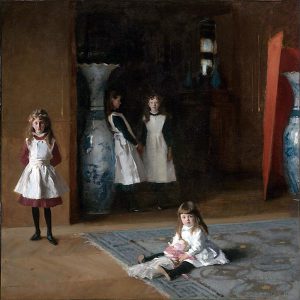
As in 1860, the Gray family[1] planned to spend the hot summer months of 1864 in Manchester, north of Boston. In the meantime, there was a grand society wedding to attend; Dr. Gray had a fainting spell following an afternoon party; and the news of the sinking of the Alabama made for serious reflection.
61 Bowdoin Street, Boston, Friday, 24 June 1864: We have secured rooms at Chase’s, quite near Mrs. Richards’s cottage in Manchester, which will be very pleasant for Mary [Gray] & Elise [Richards].[2] The house accommodates only our party – a decided advantage – and they take us for $52,00cts a week – very reasonable as board goes now. I hope they won’t starve us on it! Continue reading ‘A great thing for Ned Boit’
Revolutionary privateering

In attempting to prove Revolutionary War service for a man from Norwich, Connecticut, who did not show up in any militia lists, pension records, war memorials, etc., I turned to the subject of privateering. According to the DAR Genealogy Guidelines, “privateers were privately owned, armed trading vessels, commissioned or issued letters of marque from either the Continental Congress or from individual provisional government[s] (sometimes by both) to capture enemy ships and goods. The bounty or prize was divided by the officers and seamen and the governing body that authorized the privateering. Bounties made privateering very profitable and provided much needed supplies to the American forces. The Continental Congress officially authorized privateering for the war on 23 March 1776, although some states had already initiated privateering prior to that date.”
Norwich, located at the head of the Thames River, was a center for ship-building; the largest shipping firm in Norwich was Howland & Coit. Vessels traveled down the river and then sailed from New London harbor. Continue reading Revolutionary privateering
Fudging facts

Alternate dates of birth for our ancestors, perhaps ranging over several years, are common for many of us, and the reasons can vary considerably. A recent example in my own research came in the form of a deliberate change of birth date, with the sole intention to make the subject appear younger than her husband. Continue reading Fudging facts
As is
 Genealogists spend a lot of time correcting published genealogical works, which is especially ironic when it comes to Clarence Almon Torrey’s New England Marriages Prior to 1700, published by NEHGS and the work upon which the Early New England Families Study Project is based.
Genealogists spend a lot of time correcting published genealogical works, which is especially ironic when it comes to Clarence Almon Torrey’s New England Marriages Prior to 1700, published by NEHGS and the work upon which the Early New England Families Study Project is based.
We have constant inquiries about, and requests to fix, typographical mistakes and transcription errors in the Torrey database on AmericanAncestors.org, which is not really a “database” but an index to the images from the three-volume print publication, also published by NEHGS. Continue reading As is
ICYMI: Consider the siblings
[Editor’s note: This blog post originally appeared in Vita Brevis on 27 November 2015.]
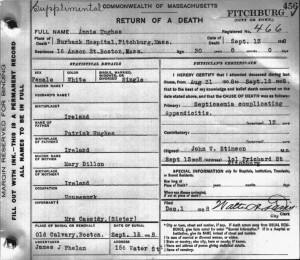 For the last several months, I have been trying to determine the origins of each of my mother’s Irish ancestors. In a previous post, I mentioned my success in locating the origins of my Kenefick ancestors; however, I have been having trouble with some ancestors with much more common surnames.
For the last several months, I have been trying to determine the origins of each of my mother’s Irish ancestors. In a previous post, I mentioned my success in locating the origins of my Kenefick ancestors; however, I have been having trouble with some ancestors with much more common surnames.
The earliest record I have for my maternal great-great-grandparents Patrick Cassidy and Mary Hughes is their marriage record, dated in Boston 28 November 1888. Continue reading ICYMI: Consider the siblings
‘What can Charles St. do?’
[Author’s note: This series, on Mrs. Gray’s reading habits, began here.]
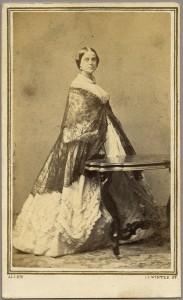
61 Bowdoin Street, Boston, Sunday, 1 May 1864: Tuesday we had our “sewing Circle” tea, at Mrs. Chadwick’s[2] – 24 of us there – a very pleasant gathering – sumptuous tea – a tiny bouquet laid on each plate, and splendid flowers in vases on the tables. Continue reading ‘What can Charles St. do?’
Daughtered out
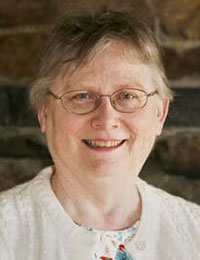 In a patronymic culture we put emphasis on surnames that are passed from son to grandson. This is mostly a matter of habit, because tracing a genealogy of descendants by their surname is usually much easier than tracing descendants through female lines where the family names keep changing every generation.
In a patronymic culture we put emphasis on surnames that are passed from son to grandson. This is mostly a matter of habit, because tracing a genealogy of descendants by their surname is usually much easier than tracing descendants through female lines where the family names keep changing every generation.
I’ve never been politically active – Women’s Lib came along a few years too late for me; I was already out of college and missed the movement, although I embraced “most” of the ideas – but lately I’ve been thinking more about how we all still, out of habit, approach genealogical research and publication mostly by surnames. Continue reading Daughtered out
ICYMI: Family plots: Part Two
[Author’s note: This blog post originally appeared in Vita Brevis on 19 October 2015.]
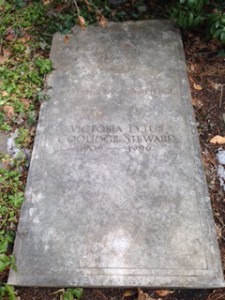 Riffing on something Chris Child wrote about collecting photos of family members in July, I thought I might do something similar with information about family burial plots. Such an exercise leans heavily on Findagrave.com (where some of the images may be found), although in my case I also have the notes compiled by my great-aunt Margaret Steward in 1966 as a resource for my research.
Riffing on something Chris Child wrote about collecting photos of family members in July, I thought I might do something similar with information about family burial plots. Such an exercise leans heavily on Findagrave.com (where some of the images may be found), although in my case I also have the notes compiled by my great-aunt Margaret Steward in 1966 as a resource for my research.
My grandparents are easy: my father’s parents (and stepmother) are buried at Hamilton Cemetery in Massachusetts, while my mother’s parents (and stepmother) are buried at Arlington National Cemetery in Virginia. I was present for my paternal grandfather’s memorial service in 1991, my maternal grandfather’s burial in 1994, and for my paternal step-grandmother’s memorial service in 1996. Continue reading ICYMI: Family plots: Part Two
Remembering William Monroe Trotter

The documentary “Birth of a Movement” – which premiered on 30 January at the Somerville Theatre outside Boston, and airs nationally on PBS on Monday 6 February during African-American History Month – explores D.W. Griffith’s The Birth of a Nation (1915) through a modern lens. What caught my attention about the film is the documentary’s protagonist, famed civil rights activist William Monroe Trotter (1872–1934). Trotter lived nearly his entire life in Boston and founded the Boston Guardian, an independent African-American newspaper. He also established the Niagara Movement, in 1915, with fellow Massachusetts native W.E.B. DuBois, and participated in numerous other causes for civil rights until his death in 1934. Continue reading Remembering William Monroe Trotter